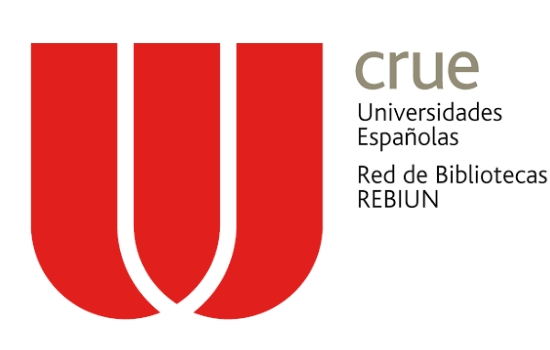Una mirada sociocultural del pensamiento algebraico desde la teoría cultural de la objetivación
Palavras-chave:
Generalización de Patrones, Semiótica Cultural, Registros Semióticos, Signo, Actividad Matemática, Generalization of Patterns, Cultural Semiotics, Semiotic Registers, Sing, Math ActivityResumo
Resumen
Cuando se habla de pensamiento algebraico suele pensarse en la representación de los objetos matemáticos por medio de un registro semiótico compuesto principalmente por signos alfanuméricos. Entonces, podría pensarse que la manipulación de los símbolos algebraicos, por parte del estudiante, se convierte en un indicador del grado de desarrollo del pensamiento algebraico del mismo. En contraste a lo anterior, algunos investigadores en educación matemática han postulado que el lenguaje alfanumérico propio del algebra tradicional no es la única herramienta semiótica que da cuenta de la naturaleza y desarrollo del pensamiento algebraico de los individuos. En este artículo se presenta una evidencia de este hecho realizando una mirada del pensamiento algebraico que permite examinar aspectos de la forma como piensan, sienten y son los estudiantes frente a lo indeterminado y explorar cómo operan con las cantidades desconocidas para finalmente indagar sobre la herramienta semiótica que utilizan para representar una situación en la que interviene alguna cantidad desconocida. La evidencia presentada corresponde a un análisis realizado a la actividad matemática de un grupo de estudiantes al desarrollar una Tarea sobre generalización de patrones de una secuencia figural. El análisis se sustenta teóricamente con la Teoría Cultural de la Objetivación y tiene como propósito poner de manifiesto la importancia de reconocer que en los procesos de pensamiento de los estudiantes intervienen una serie de aspectos histórico culturales que influyen directamente en la forma de representar, semióticamente hablando, los objetos algebraicos. En otras palabras, el objetivo es argumentar teóricamente del por qué es importante ampliar la mirada de los signos que dan cuenta de la naturaleza y el desarrollo del pensamiento algebraico desde una teoría que se inscribe en una perspectiva semiótico cultural de la enseñanza y aprendizaje de las matemáticas.
Abstract
When talking about algebraic thinking it is common to think of the representation of mathematical objects through a semiotic register composed mainly of alphanumeric characters. So one might think that the manipulation of algebraic symbols of the student becomes an indicator of the degree of development of that same algebraic thinking. In contrast to this, some researchers in mathematics education have postulated that the very language of traditional alphanumeric algebra is not the only semiotic tool that reflects the nature and development of the algebraic thinking of individuals. This article provides evidence of this fact by taking a look at the algebraic thinking that allows you to examine aspects of the way students think, feel, and face the unknown and explore how they operate with these unknown quantities to finally investigate the semiotic tool used to represent a situation involving an unknown quantity. The evidence presented is an analysis of a mathematical activity a group of students developed to generalize figural patterns in a sequence. The analysis is based theoretically with the Cultural Theory of Objectification and aims to highlight the importance of recognizing that in the thought processes of students, a series of historical and cultural aspects directly influence the way of representing, semiotically speaking, algebraic objects. In other words, the objective is to argue theoretically why it is important to extend our view of the signs that reflect the nature and development of algebraic thinking from a theory that is part of a semiotic cultural perspective of teaching and learning mathematics.
Downloads
Referências
Arzarello, F. (2006). Semiosis as a multimodal process. Revista Latinoamericana de Investigación en Matemática Educativa Número Especial sobre Semiótica, Cultura y Pensamiento Matemático, 267-300.
D´Amore, B. (2006). Objetos, significados, representaciones semióticas y sentido. Revista Latinoamericana de Investigación en Matemática Educativa. Número Especial sobre Semiótica, Cultura y Pensamiento Matemático, 177-196.
Gómez, J. (2013). La generalización de patrones de secuencias figurales y numéricas:Un estudio de los medios semióticos de objetivación y procesos de objetivación en estudiantes de grado décimo. (Tesis de maestría no publicada). Departamento de Matemáticas, Universidad Pedagógica Nacional, Bogotá-Colombia.
Radford, L. (2002). The seen, the spoken and the written. A semiotic approach to the problem of objectification of mathematical knowledge. For the Learning of Mathematics, 22(2), 14-23.
Radford, L. (2003). Gestures, speech, and the sprouting of signs. Mathematical Thinking and Learning, 5(1), 37-70.
Radford, L. (2006a). Elementos de una teoría cultural de la objetivación. Revista Latinoamericana de Investigación en Matemática Educativa. Número Especial sobre Semiótica, Cultura y Pensamiento Matemático, 103-130.
Radford, L. (2006b). Algebraic Thinking and the Generalization of Patterns: A semiotic perspective. Proceedings of the 28th Conference of the International Group for the Psychology of Mathematics Education, Mérida: Universidad Pedagógica Nacional.
Radford, L. (2006c). Semiótica y Educación Matemática. Revista Latinoamericana de Investigación en Matemática Educativa. Número Especial sobre Semiótica, Cultura y Pensamiento Matemático, 7-22.
Radford, L. (2008). Iconicity and contraction: a semiotic investigation of forms of algebraic generalizations of patterns in different contexts. ZDM Mathematics Education, 40, 83-96.
Radford, L. (2010a). Algebraic thinking from a cultural semiotic perspective. Research in Mathematics Education, 12(1), 1-19.
Radford, L. (2010b). Layers of generality and types of generalization in pattern activities. PNA, 4(2), 37-62.
Radford, L. (2010c). Elementary Forms of Algebraic Thinking in Young Students. In M. F. Pinto. & T. F. Kawasaki (Eds.). Proceedings of the 34th Conference of the International Group for the Psychology of Mathematics Education, 4, 73-80. Belo Horizonte, Brazil.
Radford, L. (2010d) The eye as a theoretician: Seeing structures in generalizing activities, For the Learning of Mathematics, 30(2), 2-7.
Radford, L. (2012). Early algebraic thinking epistemological, semiotic, and developmental ISSUE. 12° International Congress on Mathematical Education, Seoul, Korea.
Radford, L., Edwards, L. y Arzarello, F. (2009). Beyond Words. Educational Studies in Mathematics, 70 (3), 91-95.
Vergel, R. (2014a). El signo en Vygotski y su vínculo con el desarrollo de los procesos psicológicos superiores. Folios, 1(39), 65-76. Recuperado de http://revistas.pedagogica.edu.co/index.php/RF.
Vergel, R. (2014b). Formas de pensamiento algebraico temprano en alumnos de cuarto y quinto grados de Educación Básica Primaria (9-10 años). (Tesis Doctoral Laureada). Doctorado interinstitucional en educación, énfasis en Educación Matemática. Universidad Distrital Francisco José de Caldas. Bogotá-Colombia.
Villanueva, J. (2012). Medios semióticos de objetivación emergentes en estudiantes de primer grado escolar cuando se enfrentan a tareas sobre secuencias figúrales. (Tesis de Maestría no publicada). Universidad Pedagógica Nacional. Bogotá-Colombia.
Vygotski, L. (2000). Obras Escogidas Volumen III. (L. Kuper, Trad.) Madrid-España: Visor.
Downloads
Publicado
Como Citar
Edição
Seção
Licença
Autoria
Uma vez que o artigo seja aceito pela Revista Latinoamericana de Etnomatemática, os/as autores transferem os direitos de publicar e distribuir o texto eletronicamente, assim como para arquivar e torna-lo acessível online.
Os autores podem distribuir seu próprio material sem a permissão da Revista Latinoamericana de Etnomatemática, mas devem sempre esclarecer que a versão original esta em http://www.revista.etnomatematica.org
Copyright © 2008, Revista Latinoamericana de Etnomatemática. Todo o conteúdo da Revista Latinoamericana de Etnomatemática está disponível sob a Licencia Creative Commons Atribución 4.0 Internacional e pode ser usado livremente dando crédito aos autores e da revista, conforme é estabelecido por esta licença.











